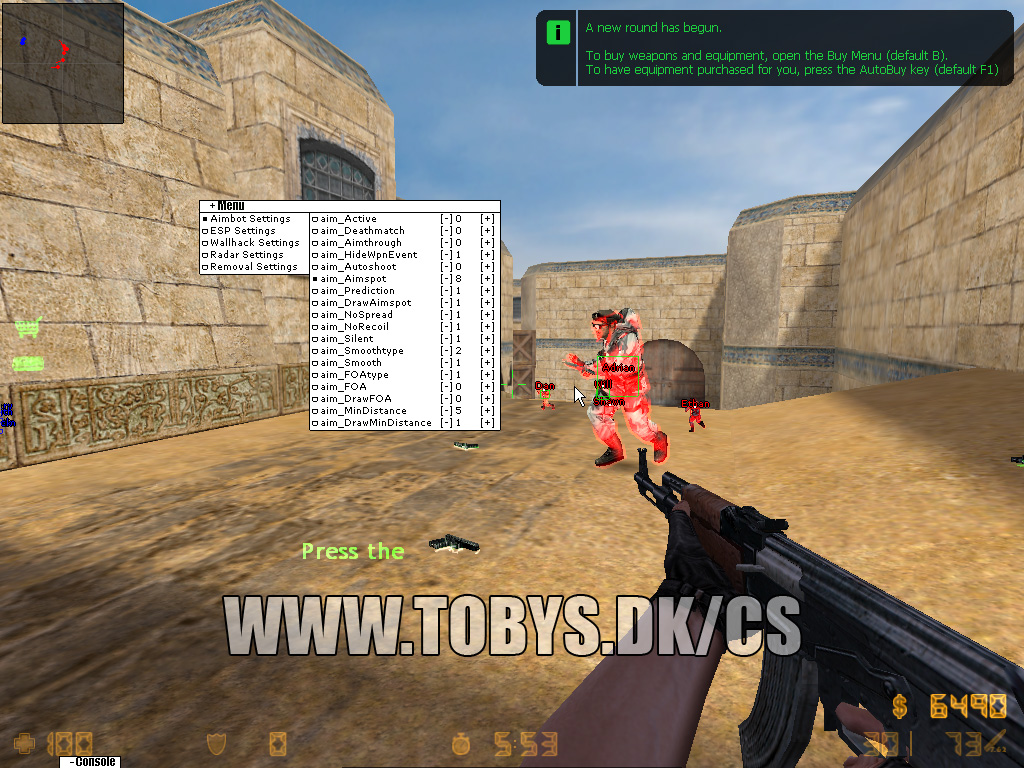

Find references to the address of Initialize Luckily, with its address doing this is easy. Now we need to find where Initialize is used so we can see its parameters being passed and therefore find the engine function table. If it found it, it moves the result from eax (Remember: return values are put into eax) into a place in memory.Īwesome, that’s the address of Initialize. If it can’t find it, it prints “could not link client.dll function Initialize”. In this case, hw.dll wants the Initialize function that’s exported from client.dll. GetProcAddress takes in a module and a string which is the name of a function that you want it to return the address of.

Finding the address of the engine function tableĭoing the debugging to actually find the engine function table is the real legwork. This is super important because it means we have a way to call these game engine functions–functions like Con_Printf and pfnSetScreenFade which I used to make the no flash hack–inside the dll which we inject. If we can find where the Initialize function is in memory with a debugger, we can actually use this struct in our dll by reading the function’s parameters as they’re passed, and then creating our own cl_enginefunc_t pointer and setting it to the address we find. This is the game’s engine function table. PfnEngSrc_SetMouseEnable_t pfnSetMouseEnable PfnEngSrc_pfnServerCmdUnreliable_t pfnServerCmdUnreliable PfnEngSrc_pfnSetScreenFade_t pfnSetScreenFade PfnEngSrc_pfnGetScreenFade_t pfnGetScreenFade PfnEngSrc_pfnGetLevelName_t pfnGetLevelName PfnEngSrc_GetEntityByIndex_t GetEntityByIndex PfnEngSrc_GetLocalPlayer_t GetLocalPlayer PfnEngSrc_GetMousePosition_t GetMousePosition PfnEngSrc_GetClientMaxspeed_t GetClientMaxspeed PfnEngSrc_ServerInfo_ValueForKey_t ServerInfo_ValueForKey PfnEngSrc_PhysInfo_ValueForKey_t PhysInfo_ValueForKey PfnEngSrc_GetWindowCenterY_t GetWindowCenterY PfnEngSrc_GetWindowCenterX_t GetWindowCenterX Pointers to the exported engine functions themselves Memcpy(&gEngfuncs, pEnginefuncs, sizeof( cl_enginefunc_t)) ĭoing a quick search in the sdk comes up with: cl_enginefunc_t 1 RecClInitialize(pEnginefuncs, iVersion) Int CL_DLLEXPORT Initialize ( cl_enginefunc_t *pEnginefuncs, int iVersion )
#Cs 1.6 hack code
In the source code there’s a function called Initialize that takes in a pointer to cl_enginefunc_t. So we can take a look around there for hints.
#Cs 1.6 hack mod
Luckily, Valve released the source code (called the sdk) to Half-Life which CS is a mod of.
#Cs 1.6 hack how to
The DLL then has access to all the game’s memory and can do whatever you want it to do granted you know how to do it. The injector is a program that allocates space in the target process (the game) and then calls the win32 api CreateRemoteThread function to start execution of the DLL file. Here’s how it works and how to extend it. It wouldn’t be too hard to extend the hack into something like a wallhack or an aimbot. It’s only a no-flashbang hack, but all of the dirty work is done. I did some reading and then wrote an internal hack with some help from forum posts on. After trying and failing to hack this game on and off for almost 15 years (I started playing young), I finally had enough background in C, assembly, and operating systems to pull it off.


 0 kommentar(er)
0 kommentar(er)
